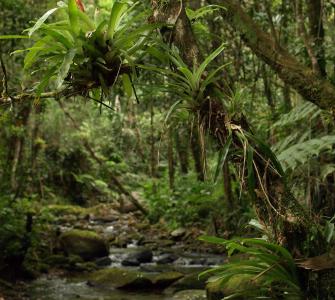Solving our global climate crisis hinges on doing a number of things right. One is slowing - eventually stopping - deforestation, which now accounts for 15-20% of global greenhouse gas emissions. To do that we need to know how much stopping deforestation costs and where on the Earth's vast tropical belt it can be done most cost-effectively. With the support of the Gordon and Betty Moore Foundation, CSF has designed an "opportunity cost" analysis method that works at the level of individual farms and single land uses, even scalable up to the level of entire regions.
Our goal was to enable local REDD+ (Reducing Emissions from Deforestation and Degradation) projects with a tool that can collect detailed data, and also to feed national and global cost models with better information. The model was developed by CSF-Brasil staff, building on the experience of Bolivian research sponsored by CSF.
Thus far, the model has produced several key insights. One application in Ecuador, for instance, found that an area currently used as pasture land might be more efficiently converted to support multi-crop agroforestry. Because the land itself is not suitable so suitable for livestock, this alternative use would permit greater revenue generation. Moreover, it would significantly heighten potential for carbon sequestration. The model's ability to compare revenue generation and carbon sequestration potential in different scenarios has become of routine importance to Ecuador's Ministry of Environment and Ministry of Agriculture. In addition, conservationists continually highlight the usefulness of the model's ability to identify feasible areas for REDD+ and Socio Bosque (PSB) schemes, as well as produce bases on which to build and negotiate compensation payments for reductions in deforestation.
In the next phase of the project we will explore the use of digital data-collection devices to feed information instantly into an online database and return immediate results to the interview subject.
-To read a CSF study that puts this model to use in estimating the 'cost of conservation' in the Northwest Bolivian Amazon, click here. Or, click here to read this study's policy brief.

